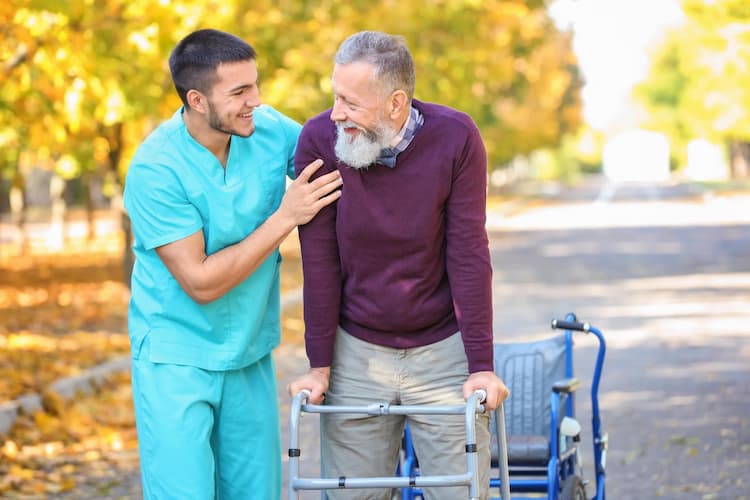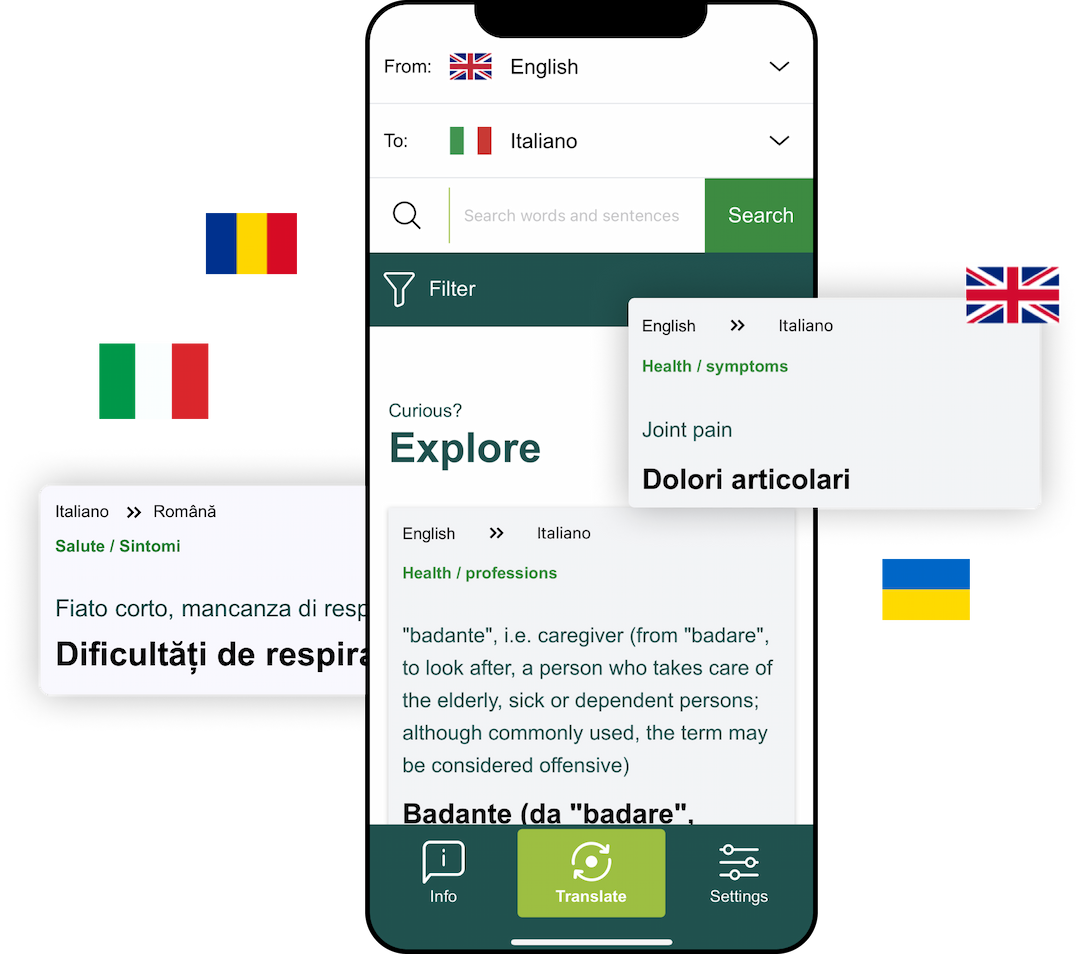The Project
a multilingual tool for home care
"By 2030 Italy will be the fourth oldest country in the world"
Euromonitor International 2015
According to Censis (2013), domestic workers employed by Italian families are expected to reach 2,151,000 in 2030, of whom 77.3% are foreign and 60% work for seniors as caregivers.
Age.Vol.A.
Ageing, Volunteering, Assistance
The Age.Vol.A. project starts from the assumption that, given this demographic scenario, between home-assisted Italian seniors and their non-Italian caregivers, a linguistic and cultural barrier as well as a digital divide exist. This tends to increase the physical and social isolation of the elderly population, even reducing their personal space, e.g. when the home is their only living place but it is co-occupied by a carer who is a foreigner and, due to said linguistic and cultural barriers, also remains a stranger.
The Age.Vol.A. project hypothesises that the linguistic and cultural barrier existing between home- assisted Italian seniors and their non-Italian caregivers can be removed or at least reduced by creating and introducing multilingual tools (a web portal and a smart device application) aimed at providing the carers with terminology and practical information related to their assisted and the institutions they usually deal with in the carers’ own language(s).
A project led by the University of Insubria and the University of Milan and funded by Fondazione Cariplo to improve communication between foreign-speaking caregivers, the assisted elderly and their families.
The research conducted by the Age.Vol.A. team in the area of Varese have been used to design and create these multilingual technological products aimed to assist those who assist the elderly. They contain, divided and organised into different sections, information useful to the caregivers’ profession related to senior services, from health and healthcare to administrative issues. The Age.Vol.A. tools are meant to be a work in progress and are constantly being enhanced with new terminology that can be useful for the daily activities of in-house caregivers. The languages selected for these tools represent the languages of the main migrant communities in the Varese area.





